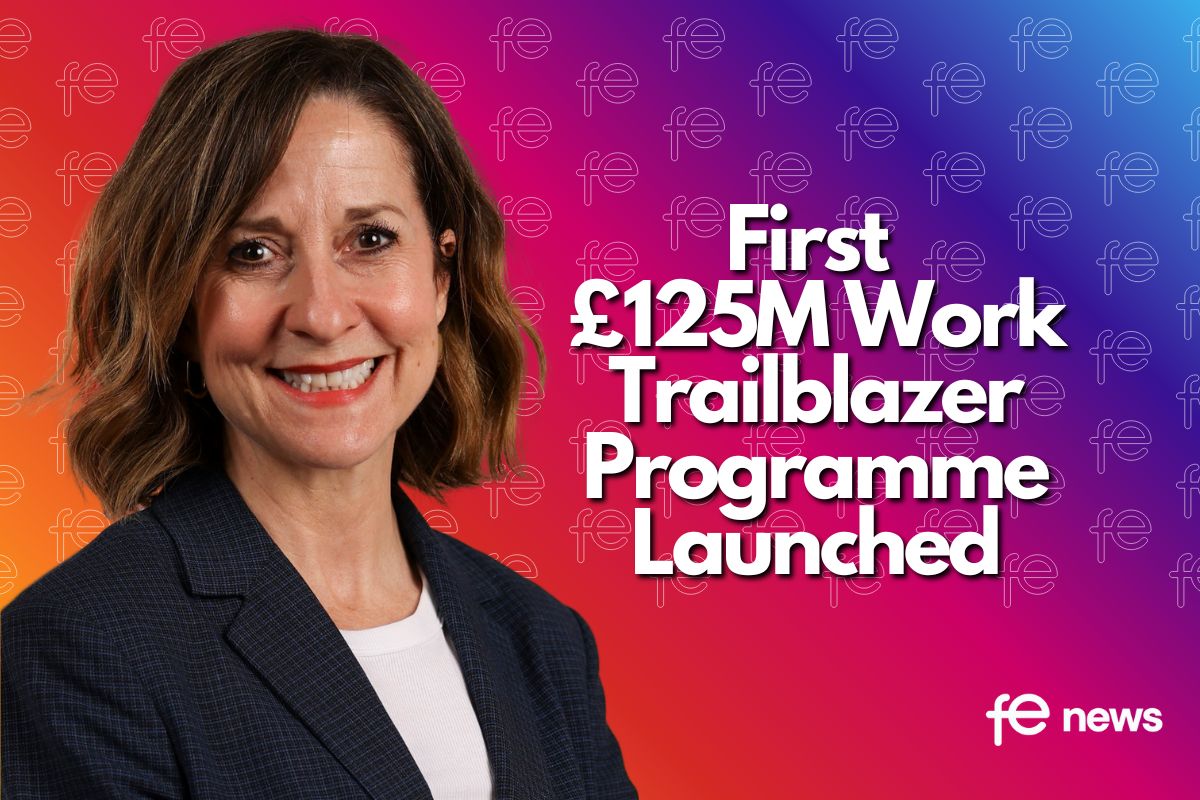Priorities for youth training and employability

There is a kind of pendulum of attention amongst politicians. Sometimes we are very focused, in recent times we’ve been very focused on the college sector, in recent times we’ve been very focused, I think, on schools and the Scottish Government’s reforms to the governance of schools, and in that, in my view, I think probably apprenticeships and skills and vocational education has not had as much attention from myself and my colleagues as perhaps it merits.
Now I was thinking about that on the way in this morning, next week our attention in Holyrood will turn to the Budget and some years ago, I guess almost 10 years ago, not quite 10 years ago, in the Budget debate apprenticeships were very much to the fore.
In those days we had a Government which was a minority, as we do again now, and on one occasion at least they failed to win the Parliament support for their Budget and had to begin negotiating to try and find a way forward, to bring forward an alternative, and at that time our key demand was around the numbers of apprenticeships and indeed the Government did increase the number of apprenticeships in the Budget and that meant that in the end we did support them and the Budget went through.
I recall, not so far from here in the discussions at that time, going to Bute House and meeting the then First Minister, who was quite concerned about the commitment to the number of apprenticeships we were looking for, concerned at how they would actually be able to deliver the numbers.
He said to me, “I don’t want to enter this agreement if you are going to spend all of your time pursuing me and criticising us because we are 5 or 10 apprenticeships short of this number”, and that’s a commitment that I made, and I think the number was indeed delivered and since then it’s significantly increased, around 36,000 now is it, I think, the target.
But I do think in hindsight that the legacy of that agreement, although it has been an expansion of the apprenticeship programme in Scotland, has been rather too much of a concentration on the numbers of opportunities which are available and not enough on the quality and the detail of the programmes and the frameworks themselves, and that is something perhaps that we should be begin to consider, and this morning, I think, will be an opportunity for some discussion around that.
The other, casting even further back on the way in this morning, I was reminded of a time even longer ago when I was still a physics teacher and I was teaching in Inveralmond in Livingston and we had, much to our delight, a particularly promising higher class in physics one year and they made a great start to the school year and things were going well until what was then still Ferranti’s opened up an apprenticeship programme and our entire higher physics class disappeared to Ferranti’s.
And I think there are a couple of lessons in that for me which I’ve tried to recall.
One is that our annoyance at what had happened was really misplaced and it was based in our lack of esteem for that alternative vocational course compared to our school based course which we were trying to deliver.
The second thing is, and I don’t know if this is true, because it’s not something I was able to track, but knowing Ferranti and its successor companies, I’m pretty sure that some of that higher class, succeeding in their apprenticeship, probably then went on to higher qualifications, to university, perhaps to master’s, even perhaps to PhDs through a route which was not the one that we had foreseen for them, and I do think that the focus of our first session this morning is absolutely critical, that relationship between school education, vocational education, college and apprenticeship routes, those young people all those years ago saw for themselves, a pathway which with hindsight was probably better than the one that I and my colleagues had envisaged for them, and there is, I think, an opportunity now if we take it, to try and create those kind of alternative pathways into skills and education and training and to a career for more young people.
The Wood Report gave us an enormous opportunity to do that, pointing the way, that was supported by the Scottish Government through the Developing Young Workforce funding, but I do think that we have to maintain our focus on that because if all Wood leads to is more high quality work experience type opportunities, or the chance to taste life in a college rather than a school, then we will have missed the opportunity. We really do have to create alternative quality pathways for as many young people as want to use them, as we possibly can.
And just to mention as well, when I think back to that higher class, I think I’m right in saying that every single one of them was a young man, and that is something also which the time has come to address. If we create these pathways into skills and education and vocational training, those pathways cannot exclude 50% of the population because we are letting ourselves down if we do that.
Iain Gray MSP for East Lothian and the Spokesperson on Education and Science for Labour in the Scottish Parliament, speaking at the Scotland Policy Conferences Keynote Seminar: Next steps for apprenticeships and skills development in Scotland held on 6th December 2017.
Questions and comments from the floor, addressed to Jamie Hepburn MSP, Minister for Employability and Training, The Scottish Government.
Q – George Jamieson, NFU Scotland: I’m a Policy Manger with the responsibility for education and skills. I am really encouraged that [you] mentioned the need for quality, as important, if not more important than quantity.
In the rural sector there’s a real need for greater uptake in modern apprenticeships in particular, but in small businesses such as farming the difficulty is the rurality and the connection with schools and colleges is much more difficult for these small businesses in rural areas, but it’s very, very important.
So my plea really is that the rurality in small businesses needs a more nuanced and that Government support acknowledged that and we work hard to get more modern apprenticeships taking up the opportunities in rural areas.
A – Jamie Hepburn MSP: In relation to the issue of challenges in rural settings, I am alert to that and one of the ways we’ve responded to try and improve the provision and support for modern apprentices in rural settings is we’ve created something called the rural supplement for a payment for training providers in rural settings help make it easier for those training providers because they are most likely to be engaging with apprentices in a rural setting.
And in relation to specific sectors, farming is one that I know there’s a particular challenge, a multitude of challenges in terms of an ageing workforce, a presumption from some of the younger generation that have parents or grandparents with a long history in farming maybe deciding it’s not the career for them, so we need to try and bring other people through.
There is stuff happening out there, I know that Fergus Ewing who is the Cabinet Secretary for the Rural Economy is alert to this challenge, but it so happens I was up visiting Argyle and Bute, a Developing Young Workforce Group yesterday and this was one of the challenges we referred there.
Clearly it’s an issue in that part of the world and what I was I happy to see, and my expectations would be that the college sector is responsive to local economic and social needs, and that’s exactly what the college is doing up there, they are working with that sector to make sure they can do rather better in ensuring that there’s a pipeline of young people coming through. But yes, there’s more to be done and I recognise that.
Q – Stuart McKenna, The Scottish Training Federation: The Flexible Workforce Development Fund, will it continue next year?
A – Jamie Hepburn MSP: That’s a good succinct question, excellent, thanks Stuart. Well that’s a bit of a change in tack because Stuart is normally asking me about the Employability Fund, rather than Flexible Workforce Development Fund.
We are presently going through the process of developing our budget, having launched the Flexible Workforce Development Fund not so long ago and testing it out.
I think what I will say is my presumptions will be to continue to offer some form of Flexible Workforce Development Fund next year, Budget pending, and considering all budgetary factors.
We seek to learn from what we’ve implemented and will seek to continue and then grow and develop it, I’ve described it before and I’m sure I’ve described it directly to you, it’s just to be flexible for two reasons, it needs to be flexible for those Levy payers paying it to respond their needs, but it also needs to be flexible in terms of its adaptation, it’s growth and responding to what we learn from it.
I suppose it’s reflective of the complexities involved in that there is a variety of organisations and agencies pulling, in hopefully the same direction, but in different ways, and I suppose that reflects my wider ambition about trying to integrate my line services better to make sure, because everything I say out there is of merit and value and is, in its own way, heading in the right direction, I just wonder how joined up it is, so that is probably part of the challenge.
But for me the fundamental thing, and one of the commitments set out in developing the Young Workforce, our Youth Employment Strategy is to better embed, and Iain’s quite right, it can’t be the only thing, it certainly is far from the only thing that we seek to do through developing Young Workforce, but to better embed earlier, broader and better informed the careers guidance for young people in the school environment, you know, I think we all think back to our own experience of careers advice, and I think from my own recollection I had a sort of half hour appointment when I got the age of 17, which is probably leaving it a little late, and certainly doesn’t sound that broad to me.
And in terms of whether or not we are pointing people in the right direction in terms of vocational or academic education, in some ways I view that as a bit of a false dichotomy, I don’t see any reason whilst a young person at the school then can’t experience both and that can then better inform them in terms of the choices and assumptions they might make about the life they have ahead of them and what they want to do in the post-school environment, perhaps a combination of both.
Iain talked about his own experience of having been a physics teacher and seeing some of the young people he taught got into go into an apprenticeship at Ferranti’s.
I only know Ferranti’s because the Ferranti Thistle became Meadowbank Thistle, but there we go. And his supposition is some of those people would have gone on to academic qualification. I certainly can’t comment on the people he was referring to specifically, but that’s my experience of meeting people out and about across the country, that’s certainly been the journey for many people.
Q – Vonnie Sandlan, Colleges Scotland: The college sector was delighted to be given the responsibility by the Government to deliver the Flexible Workforce Development Fund this year and remains working closely obviously with employers to make sure that fund is being executed as appropriate.
So my question really builds on my colleague from a moment ago. Should the Flexible Workforce Development Fund be maintained next year, do we have a commitment that it would be delivered continuously through the college sector?
A – Jamie Hepburn MSP: My assumption right now, presuming we continue with the Flexible Workforce Development Fund will be that it continues to be delivered by the college sector.
I have felt this was a useful approach because I hear from employers that they have concerns about how responsive some colleges are and I know the college sector would have a different perspective, but some employers say they have a view on how responsive certain colleges are to their specific requirements and I think this is one where we can certainly leverage a greater response.
The flip side of that of course is I have been really clear when I met with Colleges Scotland that they need to step up and deliver, because if they don’t deliver then there are other training providers who I am sure will be very willing to do so.
Q – Steven Wilson, Score Group Plc in Peterhead: We’ve 300 odd apprentices in Peterhead, we’ve got a long history of training apprentices, we were very keen on this Levy when it came in, it represents potentially 200 million per year income to the Government, but the Flexible Workforce Development Commitment was only 10 million, so can we get some transparency on what’s happening to the rest of the Fund?
A – Jamie Hepburn MSP: I think it goes back to what I said in my opening remarks, the Levy does not represent £200 million of income to the Scottish Government in the sense that it is new income.
I recognise for those who are paying it, including, incidentally, the public sector, the public sector collectively is the single largest contributor to the Levy here, not only just here in Scotland but recognised across the UK as a whole so the supposed £221 million that we’ve got, we reckon, and I will come to that other challenge in a minute, but we reckon that the public sector in Scotland has contributed about £73 million, but it’s not new revenue for the Scottish Government to disperse, it essentially largely replaces income that we previously accrued through the normal budgetary process.
So through the Barnet formula, if the UK Government is spending money on apprenticeships and training and so on, we would then have the consequential knock on effect that funding would be provided to us through the normal block grant.
What the UK Government has done is essentially just create a new mechanism by which to raise the funds which they were largely already themselves expending, so in that sense it does not represent £200 million of additional income.
You’re quite correct to say that Flexible Workforce Development Fund represents only a small part of the offering it’s essentially a pathfinder, a pilot to see if it’s an effective approach to learn from, but it was only one part of our wider offering, the most substantial part of how we are utilising the hypothecated sum of £221 million is to continue to offer apprenticeships with that ambition and target of 30,000 starts by 2020.
An ambition that was reinforced by the consultation we undertook, unlike UK Government who did not undertake a consultation in advance of implementing their Levy.
We went out and spoke with folk who would have interest in the matter and hear what they had to say and I would argue that everything we put in place utterly aligns with what we were asked to do.
By contrast I have watched with interest the number of apprenticeship starts in England since the Levy was introduced and we’ve only seen the first quarter for this year, there was a 61% drop in the number of apprenticeship starts south of the border, so by comparison I think we are doing very well.
Neil Snell, SGN, Chair of the National Gas Network Skills Forum: I feel that you’re missing out on statistics because an industry such as ours, the gas transportation industry, because we are a monopoly supplier in Scotland and consequently are regulated by Ofgem, we are the only company or organisation that requires particular skills and safety critical skills as well, and because of that numbers are relatively low and consequently certification bodies have withdrawn apprenticeship frameworks in Scotland.
Consequently here in Scotland we are only able to offer traineeships, or indeed employ apprentices on English frameworks and standards. I would like a light at the end of the tunnel so that we could offer apprenticeships in Scotland.
A – Jamie Hepburn MSP: You know this is one of the challenges and there’s no escaping that it can be difficult for Skills Development Scotland to offer very specific frameworks where numbers are low.
That said, my clear ask of them and I tend to find they are very responsive, is to work with employers, the representative bodies to come up with some form of offering.
So again that would be my request of Skills Development Scotland is to work with you as an employer and I hear the point you make in terms of it being very specific skills requirements for you, as an employer, but if there are other parts of the wider sector that you can work with to come up with a framework, then my ask of Skills Development Scotland is to make every effort to try and make that happen.
So I guess that’s my commitment to you, I can’t readily stand up here and make the easy and blithe commitment that there will be a framework for you but what I can commit to is that, that discussion can and will happen.
About Iain Gray MSP, Education Spokesperson, Scottish Labour Party: Iain spent his early years in Edinburgh before his family moved to Inverness. He went to George Watson’s College in Edinburgh, then the Royal Academy in Inverness, where he was awarded the school dux before returning to study Physics at Edinburgh University. He taught Maths and Physics in Edinburgh before leaving to teach in an agricultural technical school in Mozambique. After seven years as a teacher trying to support young people to make the best of their opportunities, and twelve years with Oxfam organising for social justice and against poverty around the world, Iain Gray stood for the Scottish Parliament because he believed that it represented the best opportunity to make his own country fairer and more successful. He has held 4 different Ministerial posts, including Enterprise, Transport and Lifelong Learning, alongside Donald Dewar, Henry McLeish and Jack McConnell. He also spent 4 years as a Special Adviser to the then Secretary of State for Scotland, Alistair Darling. The experience gave him a unique understanding of how devolution works. Iain became MSP for East Lothian in 2007 and was Leader of Labour in the Scottish Parliament from September 2008 to December 2011. He is currently Scottish Labour’s Spokesperson for Education, Skills and Science. Iain is married with one daughter and two step-daughters. He has five grandchildren. Outside of politics, Iain is a passionate Hibs supporter. He also enjoys reading, music and films.
About Jamie Hepburn MSP, Minister for Employability and Training, The Scottish Government: Jamie Hepburn has been MSP for Cumbernauld & Kilsyth since 2011 and was MSP for Central Scotland between 2007 and 2011. Jamie was educated at Hyndland Secondary School and the University of Glasgow, graduating with a degree in Politics and History. He joined the SNP aged 18 and went on to serve as National Convener of the both the SNP’s student and youth wings. Jamie was named Minister for Minister for Sport, Health Improvement and Mental Health during First Minister Nicola Sturgeon’s first cabinet. In 2016 Jamie was appointed as Minister for Employability and Training. Jamie lives in the Cumbernauld & Kilsyth area with his wife and two children.
The views expressed in the articles are those of the named authors. Despite best endeavours to ensure accuracy, text based on transcription may contain errors which could alter the intended meaning of any portion of the reported content. Speakers have not had the opportunity for any corrections.











Responses